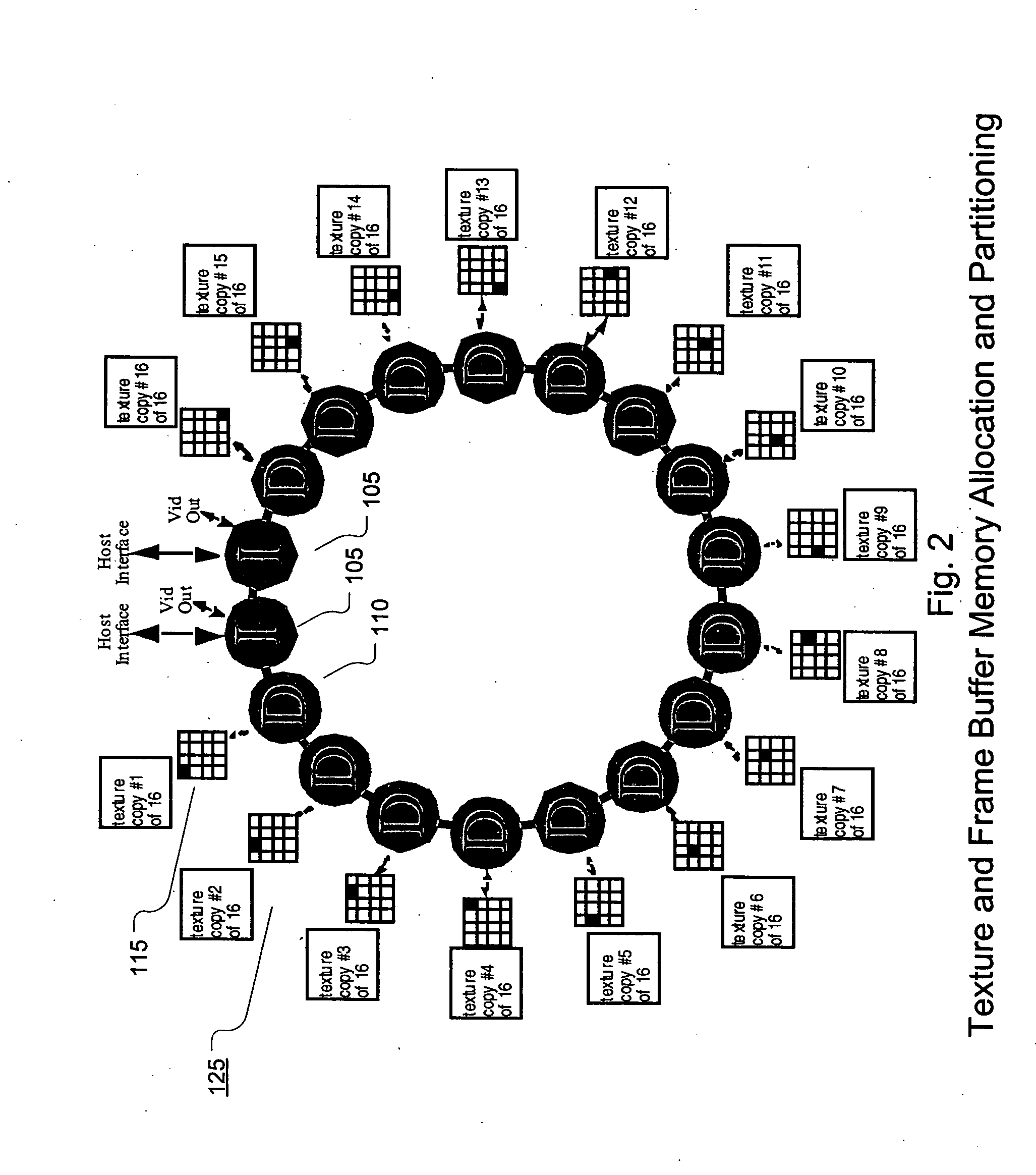Scalable high performance 3D graphics
a high-performance, 3d graphics technology, applied in the field of computer graphics, can solve the problems of only supporting the most limited forms, specialized computational systems in their own right, and the hardware accelerators for real-time interaction that drive the physical image display device are quite complex, so as to achieve high speed support, reduce the cost and risk of designing, and improve the effect of quality
- Summary
- Abstract
- Description
- Claims
- Application Information
AI Technical Summary
Benefits of technology
Problems solved by technology
Method used
Image
Examples
Embodiment Construction
A. General Discussion General Purpose Computer
[0050] One embodiment of a general purpose computer is shown and discussed. A general purpose computer is a complete system that contains one or more general purpose processor elements, attached main memory, and one or more external I / O processors. These external I / O processors in turn are connected to one or more external I / O devices. A general purpose computer is capable of running a wide range of programs performing a wide range of functions. It has not been optimized to perform any narrow range of specific functionality to the detriment of the performance of other functions.
[0051] General Purpose Processor Element
[0052] The general purpose processor element is the computational heart of a general purpose computer. A general purpose processor element generally does not contain any external I / O devices or main memory, though it can contain large amounts of cache memory. A general purpose processor element, when part of a general purp...
PUM
 Login to View More
Login to View More Abstract
Description
Claims
Application Information
 Login to View More
Login to View More - R&D
- Intellectual Property
- Life Sciences
- Materials
- Tech Scout
- Unparalleled Data Quality
- Higher Quality Content
- 60% Fewer Hallucinations
Browse by: Latest US Patents, China's latest patents, Technical Efficacy Thesaurus, Application Domain, Technology Topic, Popular Technical Reports.
© 2025 PatSnap. All rights reserved.Legal|Privacy policy|Modern Slavery Act Transparency Statement|Sitemap|About US| Contact US: help@patsnap.com



